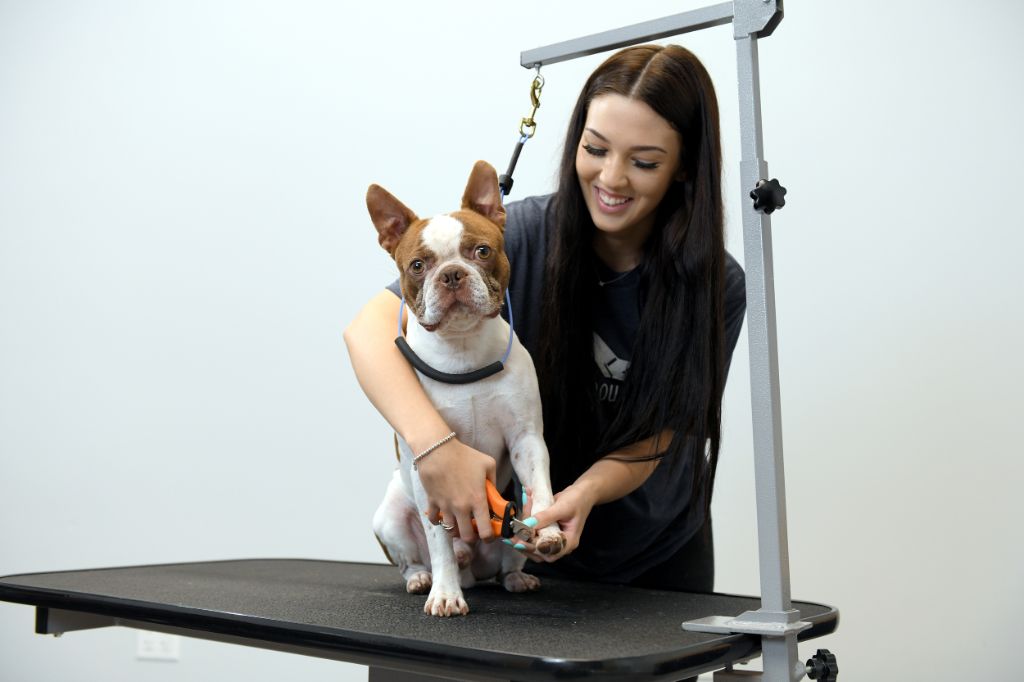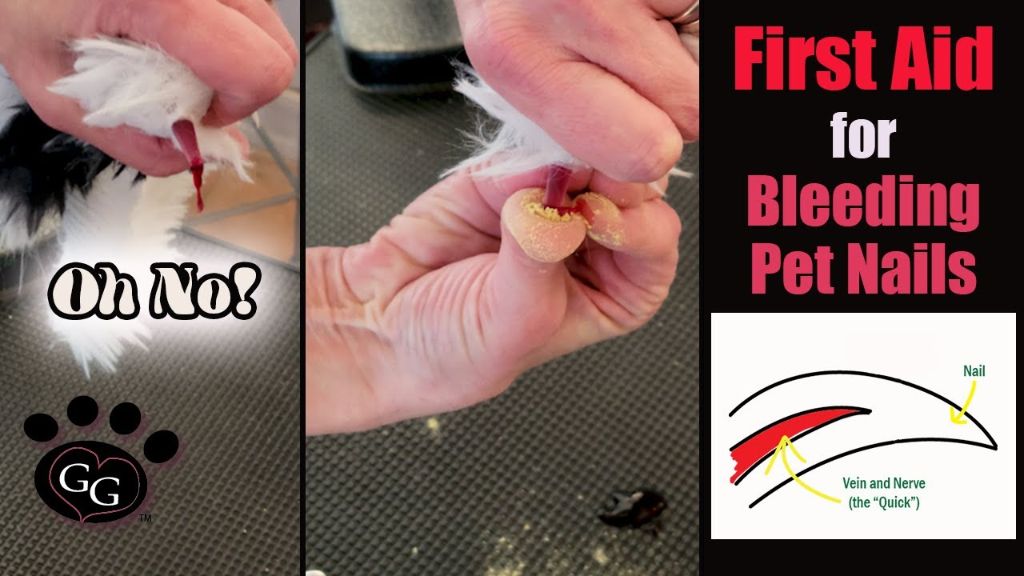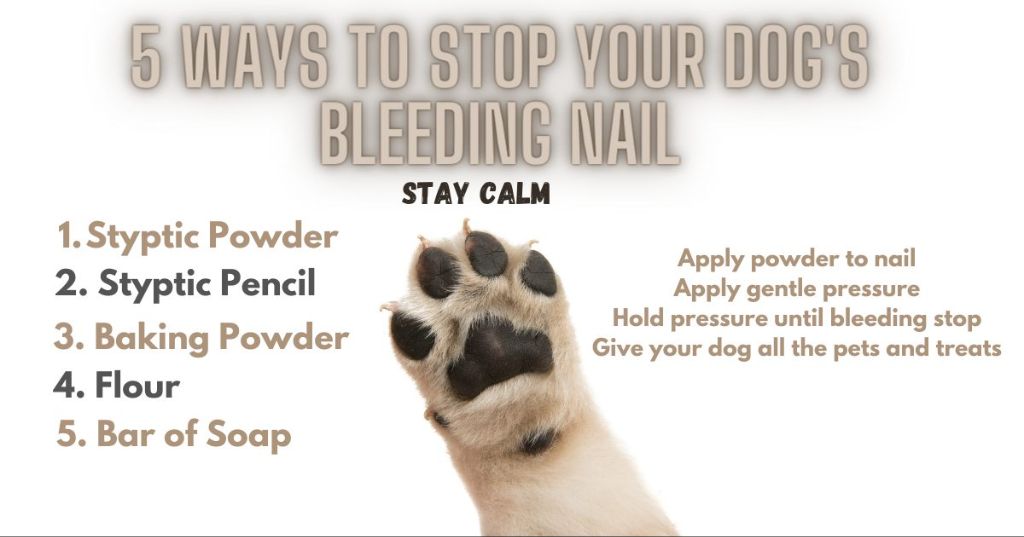Introduction
It can be scary when your dog’s nail starts bleeding after a trim. However, it is actually quite common for dog nails to bleed a little when the quick is cut too short. The quick contains the blood supply and nerves of the nail, so hitting it will cause some bleeding. While alarming, light bleeding from a trimmed nail can usually be stopped at home with the right techniques. The key steps are to stay calm, apply pressure or a coagulant, bandage if needed, and monitor your dog afterward. With the proper aftercare, your dog should heal up just fine. This guide will provide reassurance and instructions on how to stop bleeding if your dog’s nail bleeds after trimming.
Why Nails Bleed When Trimmed
Nails have a blood vessel inside called the quick. The quick supplies nutrients and oxygen to the nail to help it grow. Hitting or cutting the quick will cause bleeding because it damages this blood vessel. As a dog’s nails get longer, the quick actually grows longer too. This means overgrown nails have a longer quick that’s more likely to get hit when trimming. Unfortunately, the location of the quick isn’t always visible upon inspection. Even experienced pet owners can cut too far and hit the quick by accident.
According to PetMD, “when it sustains an injury, it is painful for the dog – and there tends to be a lot of bleeding.” Trimming into the quick not only causes bleeding but discomfort for dogs when their nails are clipped too short.
Preventing Nail Bleeding
One of the best ways to prevent bleeding when trimming your dog’s nails is to trim them regularly to avoid overgrowth. Long, overgrown nails are more likely to hit the quick and bleed when cut. Keeping your dog’s nails trimmed every 2-4 weeks will keep the quick receded and lessen the chances of cutting into it.[1]

It’s also important to use high-quality nail clippers designed specifically for dogs, not human nail clippers. The guillotine-style clippers with a guard help control the length of nail removed with each clip, allowing you to trim just a small amount at a time. Taking off just a little bit each time gives you better control and visibility.
Having a styptic powder or gel on hand before trimming can also prevent excess bleeding. These products help constrict blood vessels and stop bleeding quickly if you do nick the quick. Popular options like Kwik Stop Styptic Powder contain benzocaine for pain relief too.[2] Keeping it nearby allows you to act fast to stop bleeding if an accident does occur.
With some preparation and preventive steps, you can trim your dog’s nails safely and avoid those bleeding nail incidents.
Stopping Bleeding From Nail
If you accidentally cut your dog’s nail too short and it begins bleeding, there are a few simple steps you can take to stop the bleeding:
First, apply gentle but firm pressure to the nail with a clean cloth or paper towel. Hold the pressure for 2-5 minutes. This will help the blood clot and stop the bleeding in many cases. You can also try applying styptic powder or using a styptic pencil directly to the nail. According to Wahl USA, styptic products contain an ingredient called ferric subsulfate that contracts blood vessels and forms a quick clot to stop bleeding.
Gently press the styptic powder or pencil tip directly onto the bleeding nail and hold it there firmly for 30-60 seconds. Repeat as needed until the bleeding stops. It may take several applications. Just be careful not to get styptic powder onto your dog’s skin or fur, as it can be mildly irritating.

If bleeding persists after 5-10 minutes of holding pressure and using a styptic product, contact your veterinarian, as prolonged bleeding could be a sign of an underlying health issue.
Homemade Styptic Options
If you don’t have commercial styptic powder on hand, you can use some common household ingredients to help stop the bleeding from your dog’s trimmed nail.
Two ingredients often recommended are baking soda or cornstarch. These can be applied directly to the bleeding nail. The powder helps constrict the blood vessels and promotes clotting. Apply a generous amount to fully cover the nail and maintain pressure for several minutes until the bleeding stops. The powder may need to be reapplied if bleeding persists. Though not as fast-acting as commercial styptic powder, baking soda and cornstarch can be effective for minor nail bleeding.

Another option is to use a bar of soap. Rub the soap bar directly onto the nail tip. The soap helps clean the wound while also acting as an astringent. The soap promotes clotting as it draws oils from the skin. Maintain pressure on the nail for a few minutes as the soap is applied.
You can also make a homemade styptic from black tea bags. Simply wet a black tea bag and apply direct pressure with it on the bleeding nail for 5-10 minutes. The tannins in black tea will help constrict blood vessels. This works similarly to the commercial styptic powders.
For sources of information, see Daily Paws and Puppy Leaks.
When to See the Vet
If your dog’s nail is bleeding after being trimmed, you may need to seek professional veterinary care in certain situations. According to MedVet, it’s time to see the vet if the bleeding does not stop within 15-20 minutes of applying pressure and trying home remedies. Per VCA Animal Hospitals, you should also take your dog to the vet if the nail is partially detached or torn. These injuries are more severe and usually require medical treatment to properly stop the bleeding and prevent infection.
Signs that you need to promptly take your dog to the vet include:
- Bleeding continues longer than 15-20 minutes despite pressure and styptic attempts
- Nail is partly ripped off or dangling
- Dog seems to be in distress or pain from the nail injury
Seeking prompt veterinary care is crucial if the bleeding persists or if there is a severe nail tear. The vet can properly clip away damaged parts, cauterize the wound, and bandage the paw to control bleeding and protect the nail bed. They may prescribe antibiotics or pain medication as well. Getting veterinary treatment right away can help prevent complications like excess blood loss or infection in the nail bed.
Aftercare
After trimming your dog’s nails, it’s important to monitor for additional bleeding and keep the dog calm to allow the bleeding to stop. Here are some tips for aftercare following nail trimming:
- Monitor the trimmed nail for several hours, checking periodically for additional bleeding. Apply pressure with a clean towel or gauze if bleeding resumes.
- Restrict your dog’s activity and keep them calm and settled for a few hours after trimming. Excited movement can dislodge clots and restart bleeding.
- Apply a small amount of antibiotic ointment, like polysporin, to the trimmed nail. This can help prevent infection.
- Watch for signs of a nail infection, like persistent bleeding, redness, swelling, discharge, or licking at the nail. See your vet if these develop.
Following these aftercare tips can help avoid complications and keep your dog comfortable after nail trimming.
Preventing Future Bleeding
By trimming your dog’s nails regularly every 2-4 weeks, you can help prevent excessive bleeding when the quick is cut. Keeping the nails short will help the quick recede over time. Introduce nail trims slowly with positive reinforcement to get your dog comfortable with having their paws handled. Give your dog praise and treats during and after trimming to create a positive association.
According to the AKC article “Trim Your Dog’s Nails Safely: Tips, Tricks, And Grooming Advice” (https://www.akc.org/expert-advice/health/how-to-trim-dogs-nails-safely/), regular nail trims every 2-4 weeks will help the quick recede and prevent bleeding. The article recommends going slowly, praising your dog, and giving treats to make it a positive experience.
Trimming Tips By Dog Breed
There are some key things to keep in mind when trimming nails for different dog breeds:
Short hair breeds like Boxers, Boston Terriers, and Greyhounds need their nails trimmed more often since their nails are not naturally worn down as much. Aim to trim every 2-3 weeks.
Long hair breeds like Shih Tzus, Lhasa Apsos, and Poodles require less frequent trims, closer to every 4-6 weeks since their hair helps wear the nails down more.
For dogs with dark nails where the quick is harder to see, shine a flashlight through the nail to better visualize where the quick ends before cutting. Go slowly and only take off small amounts at a time.
Be very careful when trimming dewclaws, as they have extra blood flow and nerves. Only trim the very tip, and never cut into the quick on dewclaws.
Breeds prone to ingrown nails like Labradoodles may need extra rounding and smoothing of nail edges after clipping. Ask your vet for breed-specific advice if unsure.
No matter the breed, stay alert for signs of discomfort during trimming and stop if bleeding occurs. Learn your dog’s nails over time to avoid the quick.
When to See a Groomer
Some pet owners may find it difficult to trim their dog’s nails themselves and require the expertise of a professional groomer. There are a few key instances when it is advisable to seek the help of a dog groomer for nail trimming:
If you have difficulty getting your dog to comply with at-home nail trims, a professional groomer may have more experience calming dogs and keeping them still during the process. Groomers often use treats, praise, and restraints to keep dogs relaxed.

If you fear hitting the quick when trimming dark-colored nails, professional groomers use high-powered clippers and bright lights to see the quick more easily. They are also skilled at avoiding the quick if they accidentally cut too close.
Dogs with very thick or overgrown nails often require heavy-duty trimmers that groomers have access to. Attempting to trim very overgrown nails at home can be painful for the dog.
If you or your dog have had bad experiences with DIY nail trims, it may be worth scheduling trims with a patient, skilled groomer to rebuild positive associations. Look for groomers experienced with anxious or difficult dogs.
Overall, people who struggle to trim their dog’s nails humanely and safely can benefit from regular professional grooming. The precision tools, restraint equipment, and expertise of dog groomers can ensure your dog’s nails stay trimmed with minimal stress or discomfort. Check reviews and consult your vet to find an experienced local groomer you can trust.